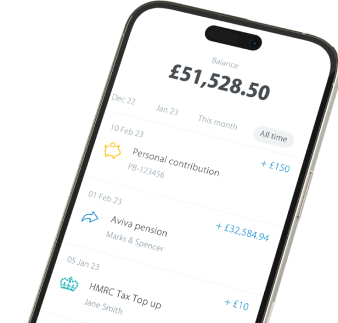
Self-employed pension savers have traditionally been a rarer bunch than their auto-enrolled employed peers and coronavirus has widened the gulf, a trend that risks leaving permanent scarring on entrepreneurs retirement plans. But there are ways to fight back.
Coronavirus has not affected everyone’s finances equally. Wealthier households have been able to save an astonishing £125bn during lockdowns, according to the Bank of England, while the poorest have seen incomes tumble and costs soar amid calls for the £20 Universal Credit uplift to be made permanent.
The self-employed are a microcosm of these extremes; businesses able to take advantage of pandemic trends like video sessions on cake making to origami and the demand for subscription boxes, have thrived. But many small firms are reliant on face-to-face interactions for business and have disproportionately suffered, showing up now in the finances of their owners.
More than half of all self-employed pension savers - around 1 million people - have paused or reduced pension contributions due to the pandemic, according to new research by Unbiased, a web directory of financial advisers. Typically this is due to a loss of income.
Only 49% of self-employed people have any pension savings at all, it found, and most expect to work beyond age 66. The average self-employed pension contribution was 4.1% - compared to 8% of qualifying earnings for employees who are auto-enrolled into workplace pension schemes. Overall Unbiased found 80% of self-employed people are putting their retirement incomes in jeopardy either by reducing their rate of pension saving, or by not saving into pensions at all.
Often entrepreneurs fall back on the old adage ‘my house is my pension’, or ‘my business is my pension’ - but this really is putting all your eggs in one basket. The risk is you are left relying on the State Pension, which in 2020/21 pays up to just £175.20 per week (rising to £179.60 in 2021/22).
A big problem for self-employed people trying to save is their income tends to go up and down a lot which can make regular contributions of a fixed amount tricky - but there are simple ways around this.
How can I save into a pension when self-employed?
1) Save into a SIPP
Saving into a self-invested personal pension (SIPP), with contributions usually benefitting from basic-rate tax relief up front, is a good option. Higher or additional-rate taxpayers can claim back an extra tax relief from HMRC as well. SIPP costs can vary. Picking a simple, low-cost SIPP allows you to keep more of your pot for retirement.
2) Open a Lifetime ISA
Anyone aged 18-39 can open a Lifetime ISA to save up to £4,000 a year and the Government will top it up by 25% (the same as basic-rate pension tax relief) up to a maximum of £1,000. Access the money tax-free from your 60th birthday, or earlier for a deposit for a first home worth £450,000 or less. Unlike a pension, early withdrawals for other reasons are possible, but you’ll be hit with a penalty on the money you take out. This is 20% for 2020/21 and will be 25% for 2021/22.
3) Set up a self-employed pension with PensionBee
PensionBee has launched a flexible pension for the self-employed. Savers can pay in according to their current income, with no minimum saving amounts. One-off or regular contributions via bank transfer or direct debit can be easily set up online or via the PensionBee app, and made from personal or business bank accounts, as a sole trader or a limited company respectively.
Risk warning: As always with investments, your capital is at risk. The value of your investment can go down as well as up, and you may get back less than you invest. This information should not be regarded as financial advice.






